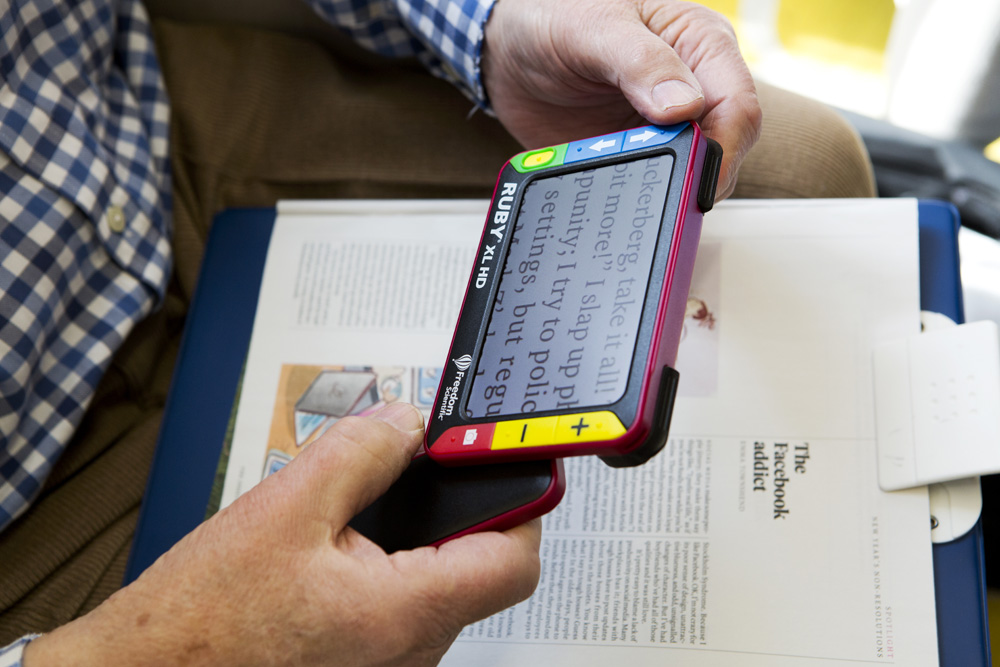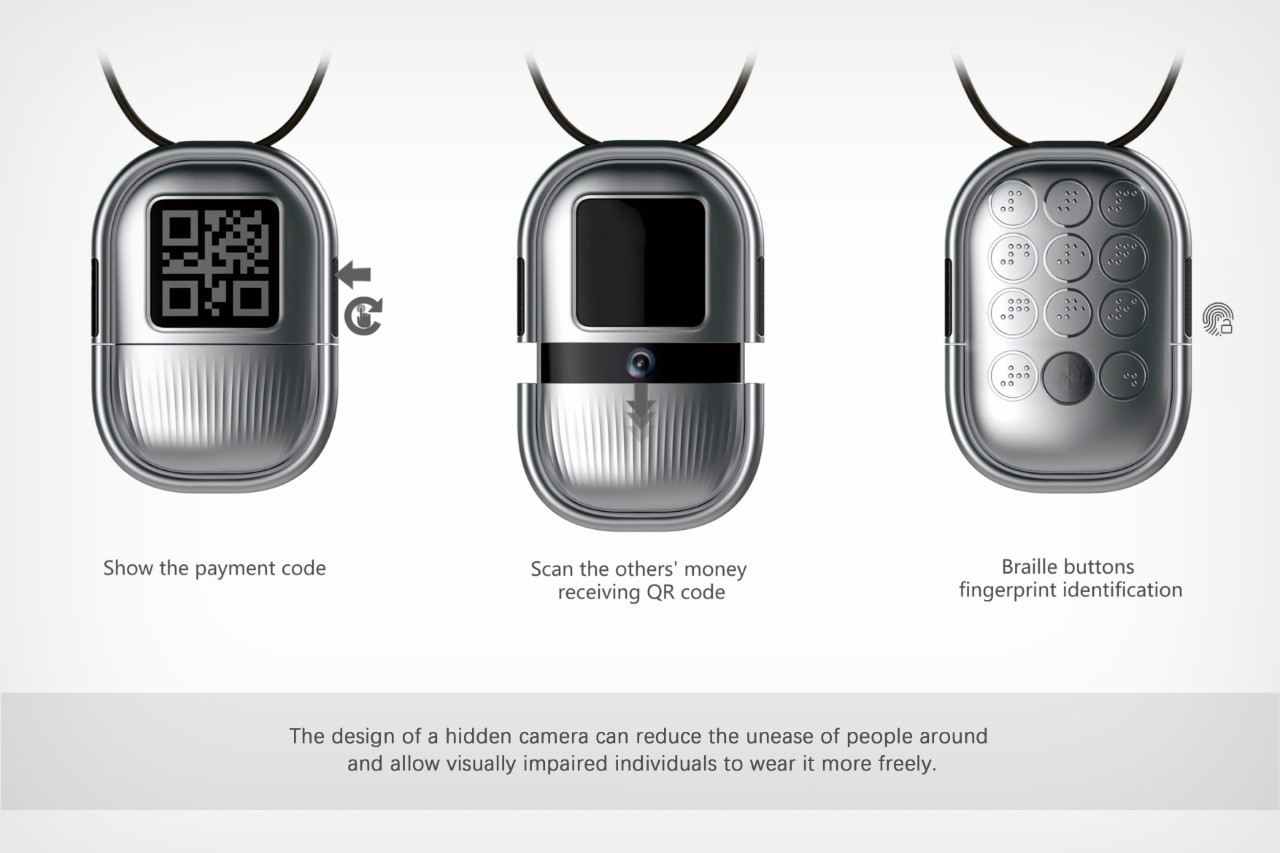Screen Readers for the Blind: Essential Devices for Digital Access
Screen Readers for the Blind: Essential Devices for Digital Access
Blog Article
Enhancing Lives With Advanced Assistive Tools for the Blind
The assimilation of advanced assistive gadgets for the blind is transforming exactly how individuals experience their surroundings and communicate with their communities. What does this evolution imply for the future of assistive technology and its duty in equipping people?
Review of Assistive Devices
Assistive tools for the blind encompass a diverse variety of innovations and tools created to improve self-reliance and enhance the quality of life for individuals with aesthetic disabilities. These gadgets provide to different demands, from navigating and mobility to interaction and daily job administration.
One of the primary categories of assistive tools includes flexibility aids, such as white walking sticks and guide dogs, which assist individuals browse their surroundings safely. Digital traveling help, geared up with sensors and audio responses, also play a considerable role in wheelchair improvement.
Additionally, devices that help with daily living activities, such as adaptive kitchen devices, Braille labels, and chatting watches, empower people to do tasks separately. Communication aids, consisting of display viewers and Braille display screens, assist in accessibility to details and make it possible for individuals to engage properly with the digital globe.
In addition, low-tech remedies like multiplying glasses and large-print materials continue to be important for lots of customers. Jointly, these assistive tools serve not only as practical tools yet also as vital enablers of autonomy, cultivating better participation in a globe that usually focuses on sighted experiences. Their combination right into every day life is crucial for promoting inclusivity and improving general wellness for those with visual problems.
Ingenious Technologies being used
Technology in innovation has considerably changed the landscape of devices offered for individuals with visual problems. Among one of the most significant advancements are clever glasses incorporated with increased reality, which offer real-time navigation aid and things acknowledgment. These tools leverage progressed electronic cameras and expert system to provide auditory cues, enhancing the user's spatial recognition and autonomy.
In addition, mobile applications have emerged as effective sources, allowing users to recognize currency, checked out text out loud, and navigate strange atmospheres with verbal instructions. Devices such as Braille displays and refreshable Braille devices proceed to evolve, using seamless connection with computers and mobile phones, therefore improving interaction and accessibility to info.
Wearable technology, including smartwatches equipped with voice-activated functions, further equips individuals by promoting quick accessibility to alerts and notifies without needing visual involvement. Responsive maps and 3D printing are likewise getting traction, offering tangible depictions of areas that help in positioning and mobility training.
Collectively, these innovative technologies not just boost the everyday lives of visually damaged people but additionally foster greater self-reliance, inclusivity, and engagement with the wider neighborhood, therefore reshaping understandings of ease of access. (OCR devices for the blind)
Individual Stories of Empowerment
Empowerment usually emerges from personal experiences that highlight the transformative influence of modern technology on people with visual problems. Take, as an example, the story of Sarah, a young artist that regained her enthusiasm for painting through the use of a smart cane geared up with barrier detection. This tool not just promoted her movement however instilled a newly found self-confidence, permitting her to navigate public rooms individually and seek her creative endeavors.

These narratives underscore the extensive impacts that advanced assistive gadgets can carry day-to-day live. By enabling people to get rid of barriers, technology promotes a sense of autonomy and self-worth. Such empowerment stories serve as a testimony to the potential of development, illustrating how the right tools can considerably enhance lifestyle and open doors to brand-new possibilities for those with visual disabilities.
Benefits of Advanced Solutions
How can advanced services fundamentally boost the lives of people with visual disabilities? The integration of sophisticated innovation into assistive gadgets considerably changes day-to-day experiences for those affected by vision loss. These sophisticated services offer unmatched freedom, making it possible for customers to navigate their settings with self-confidence. Devices such as wise walking canes furnished with sensing units, navigation applications, and wearable technology are made to supply real-time responses, boosting spatial recognition and minimizing the threats connected with movement.
Furthermore, progressed assistive modern technologies cultivate social addition by facilitating interaction and interaction. Voice-activated tools and applications permit individuals to access info and involve with their surroundings individually, damaging obstacles that formerly prevented their engagement in academic, specialist, and social setups.
On top of that, the modification and versatility of these remedies accommodate the varied requirements of individuals, thus improving their general lifestyle. Boosted capability, such as things acknowledgment and text-to-speech capabilities, encourages individuals with aesthetic impairments to execute tasks that they may have as soon as discovered testing. Inevitably, progressed assistive innovations check here not just enhance self-reliance and safety but additionally advertise dignity and self-regard, enabling customers to lead meeting lives.
Future Patterns in Assistive Technology
As technology remains to develop, the landscape of assistive gadgets for the blind is positioned for amazing developments that will certainly even more improve ease of access and freedom. Emerging patterns in assistive modern technology show a change towards enhanced integration of man-made intelligence (AI) and cool reading glasses machine learning, allowing gadgets to adjust to individual user needs in real-time. These technologies are expected to promote more instinctive navigation systems that can identify barriers and give audio comments, dramatically enhancing exterior flexibility.
Additionally, the growth of wearable technology, such as wise glasses geared up with increased truth, will allow customers to receive contextual details concerning their surroundings, therefore enhancing their spatial awareness. Innovations in haptic modern technology pledge to create responsive feedback tools, enabling customers to regard info through touch, enhancing learning and communication with their setting.
Telecommunication advancements are also leading the method for remote aid services, where skilled specialists can provide support via video telephone calls, ensuring assistance is readily available. As these patterns unravel, the future of assistive devices for the blind will definitely promote greater freedom, empowering people to browse their world with self-confidence and simplicity.

Final Thought
The assimilation of advanced assistive devices for the blind represents a substantial development in cultivating freedom and improving top quality of life. By making use of cutting-edge modern technologies, these gadgets encourage users to navigate their environments with higher confidence and freedom. As the area remains to evolve, ongoing r & d will likely yield a lot more advanced remedies, further transforming the lived experiences of individuals with visual problems and promoting a better sense of addition within culture.
The integration of advanced assistive gadgets for the blind is changing how individuals experience their surroundings and communicate with their communities. The integration of advanced innovation into assistive devices considerably changes day-to-day experiences for those affected by vision loss.As innovation continues to advance, the landscape of assistive tools for the blind is positioned for amazing developments that will certainly better improve access and independence. Emerging patterns in assistive innovation indicate a shift toward from this source increased integration of artificial intelligence (AI) and equipment learning, enabling tools to adjust to specific customer needs in real-time.The integration of sophisticated assistive gadgets for the blind represents a considerable development in cultivating independence and enhancing top quality of life.
Report this page